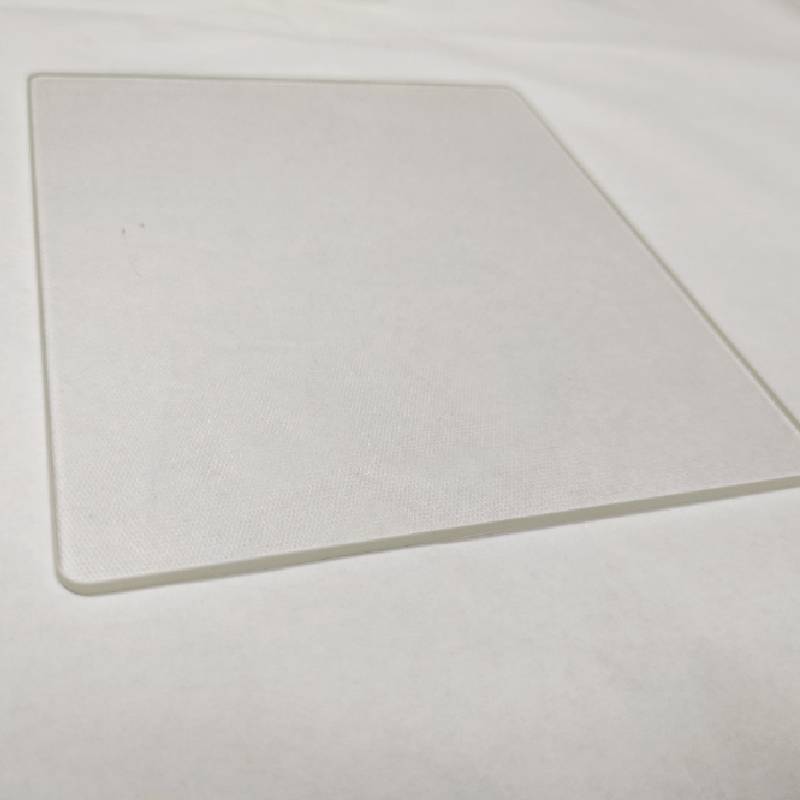All Types of Tempered Glass An Overview
Tempered glass, also known as hard glass or toughened glass, is a type of safety glass that has been processed by various methods to increase its strength compared to normal glass. The production and treatment processes result in improved thermal resistance and impact resistance, making it an essential material in a variety of applications. This article explores the different types of tempered glass and their specific uses.
1. Heat-Treated Tempered Glass
The most common type of tempered glass is heat-treated glass. During its manufacturing, the glass is heated to high temperatures (around 600 degrees Celsius) and then rapidly cooled. This process increases the glass's mechanical strength and makes it more resistant to thermal stress. Heat-treated tempered glass is commonly used in building facades, doors, and windows due to its durability and aesthetic appeal.
2. Laminated Tempered Glass
Laminated tempered glass consists of two or more layers of tempered glass that are bonded together with a layer of interlayer material, usually polyvinyl butyral (PVB). This combination offers enhanced safety as, if broken, the broken pieces adhere to the interlayer, minimizing the risk of injury. Laminated tempered glass is frequently used in skylights, glass floors, and glass railings, where both safety and transparency are essential.
3. Low-Iron Tempered Glass
all types of tempered glass
Low-iron tempered glass is a specialized product that has a reduced iron content, which can give it a clearer and more transparent appearance than standard tempered glass. Its high light transmission rate makes it an ideal choice for applications where aesthetic quality is necessary, such as in glass displays, high-end architecture, and solar panels. This type of tempered glass allows for a more unobstructed view, making it a preferred option for architects and designers.
4. Ceramic-Fired Tempered Glass
Ceramic-fired tempered glass involves printing a ceramic-based ink onto the glass surface before the tempering process. This printed glass can withstand high temperatures and is ideal for applications like cooktops and fireplaces. The printed designs are durable, providing both functionality and aesthetics.
5. Tinted Tempered Glass
Tinted tempered glass is produced by incorporating color additives during the glass manufacturing process, or by adding a film to the glass surface. This type of glass reduces glare and enhances privacy, making it perfect for office buildings and residential homes. The tint options range from light to dark, allowing for customization according to user preferences.
In conclusion, tempered glass comes in various types, each tailored for specific applications while meeting safety standards and aesthetic demands. Its strength, durability, and versatility make it a popular choice in both residential and commercial settings, reflecting technological advancements in glass manufacturing. Whether used for protection, aesthetics, or energy efficiency, tempered glass plays a crucial role in modern architecture and design.
 Afrikaans
Afrikaans  Albanian
Albanian  Amharic
Amharic  Arabic
Arabic  Armenian
Armenian  Azerbaijani
Azerbaijani  Basque
Basque  Belarusian
Belarusian  Bengali
Bengali  Bosnian
Bosnian  Bulgarian
Bulgarian  Catalan
Catalan  Cebuano
Cebuano  Corsican
Corsican  Croatian
Croatian  Czech
Czech  Danish
Danish  Dutch
Dutch  English
English  Esperanto
Esperanto  Estonian
Estonian  Finnish
Finnish  French
French  Frisian
Frisian  Galician
Galician  Georgian
Georgian  German
German  Greek
Greek  Gujarati
Gujarati  Haitian Creole
Haitian Creole  hausa
hausa  hawaiian
hawaiian  Hebrew
Hebrew  Hindi
Hindi  Miao
Miao  Hungarian
Hungarian  Icelandic
Icelandic  igbo
igbo  Indonesian
Indonesian  irish
irish  Italian
Italian  Japanese
Japanese  Javanese
Javanese  Kannada
Kannada  kazakh
kazakh  Khmer
Khmer  Rwandese
Rwandese  Korean
Korean  Kurdish
Kurdish  Kyrgyz
Kyrgyz  Lao
Lao  Latin
Latin  Latvian
Latvian  Lithuanian
Lithuanian  Luxembourgish
Luxembourgish  Macedonian
Macedonian  Malgashi
Malgashi  Malay
Malay  Malayalam
Malayalam  Maltese
Maltese  Maori
Maori  Marathi
Marathi  Mongolian
Mongolian  Myanmar
Myanmar  Nepali
Nepali  Norwegian
Norwegian  Norwegian
Norwegian  Occitan
Occitan  Pashto
Pashto  Persian
Persian  Polish
Polish  Portuguese
Portuguese  Punjabi
Punjabi  Romanian
Romanian  Russian
Russian  Samoan
Samoan  Scottish Gaelic
Scottish Gaelic  Serbian
Serbian  Sesotho
Sesotho  Shona
Shona  Sindhi
Sindhi  Sinhala
Sinhala  Slovak
Slovak  Slovenian
Slovenian  Somali
Somali  Spanish
Spanish  Sundanese
Sundanese  Swahili
Swahili  Swedish
Swedish  Tagalog
Tagalog  Tajik
Tajik  Tamil
Tamil  Tatar
Tatar  Telugu
Telugu  Thai
Thai  Turkish
Turkish  Turkmen
Turkmen  Ukrainian
Ukrainian  Urdu
Urdu  Uighur
Uighur  Uzbek
Uzbek  Vietnamese
Vietnamese  Welsh
Welsh  Bantu
Bantu  Yiddish
Yiddish  Yoruba
Yoruba  Zulu
Zulu 

